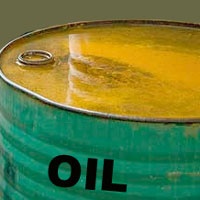Opec extends output cut by nine months
25 May 2017
Oil producers today decided to extended cuts in oil output by nine months to March 2018, amidst a global glut of crude and rising US shale gas production which saw prices more than halve in the past three years.
 Major oil producers, including Opec lead by Saudi Arabia and a dozen non-members led by top oil producer Russia, which reduced output in tandem from January, will stick o those reduced levels till march next year.
Major oil producers, including Opec lead by Saudi Arabia and a dozen non-members led by top oil producer Russia, which reduced output in tandem from January, will stick o those reduced levels till march next year.
Saudi energy minister Khalid al-Falih announced this in Vienna. The move follows a decision this month by Saudi Arabia and Russia to do so.
While the earlier announcement helped lift prices from a low of $46, on Thursday, however, prices slipped nearly 1.5 per cent.
Production cuts have helped push oil back above $50 a barrel this year, giving a fiscal boost to producers heavily dependent on oil revenues.
The oil price plunge has brought rival producers Russia and Saudi Arabia together to look for solutions to rising supplies and falling prices.
Oil's earlier price decline, which started in 2014, forced Russia and Saudi Arabia to tighten their belts and led to unrest in some producing countries, including Venezuela and Nigeria.
At the same time rising oil prices tend to spur growth in the US shale industry, which is not participating in the output deal, thus rebalancing global crude stocks at near record highs.
Oil prices that topped $100 a barrel in 2014 may have helped shale oil production feasible. US companies then took advantage of the high prices, learning to produce huge quantities of oil from shale rock in a process called hydraulic fracturing, or fracking. The technique, which is costly, then helped producers to adjust production rapidly to match changes in the market.
But since fracking required substantial investment, when oil prices plummeted in 2015 and 2016, output from shale in the United States fell around 900,000 barrels a day, equivalent to almost 1 per cent of the global supply.
The markets now fluctuate between an Opec gain and the rise in shale oil production with oil prices moving in a narrow range.






















